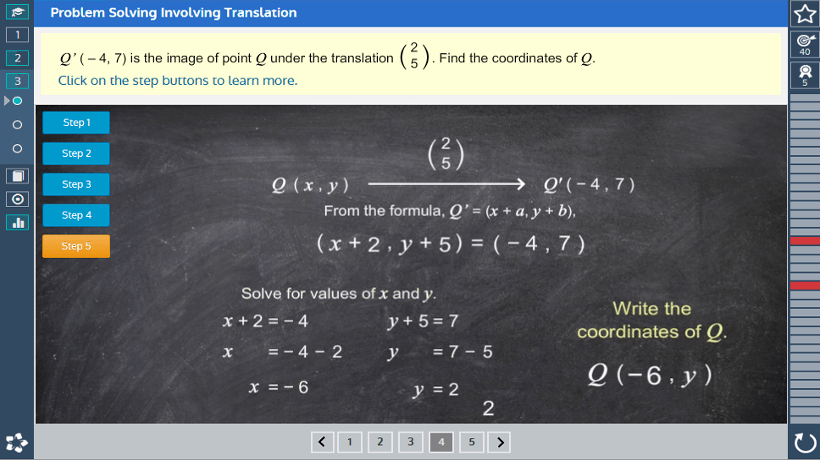There Is More To Game Mechanics Than You Might Think
Gamification is a term that you’ve probably heard before, but what does it mean?
What Is Gamification?
In essence, gamification is the use of game design and mechanics to bring topics or processes to life. You may hear the terms serious games, game-based learning, simulation games, and many many more, but essentially they all share the common belief that games can make a real difference in our behaviors. Why? Because game features, especially rewards, can trigger a dopamine rush, activating your brain’s pleasure receptors when you "win." Gaming experiences also support deep human motivators like social connection.
Gamification has become increasingly popular in recent years, as businesses have realized the potential to increase engagement, and with this increase in popularity, we’ve seen badges and progress bars sprinkled around as if made by an overzealous kid with a glitter bottle. And unfortunately, gamification has become a victim of its own success in some ways. Gamification can vary from simple reward points, badges, and leaderboards to complex worlds and challenges. It’s quite easy to create virtual badges and award points but it is a skill to craft an engaging game world that blends content with mastery.
The entertainment game industry spends billions every year trying to create the next great experience. Therefore it’s not surprising many organizations have chosen the easy way. But it can quickly fall flat. The application of the stimulus and reward quickly becomes predictable and therefore less exciting. As humans, we are complex creatures. We love patterns, we love stories, we love games, and we love meaningful experiences. What we don’t love are manipulation, being patronized, and predictability. This isn’t to say gamification has failed as a solution, rather the technique has at times been inappropriately applied, which of course doesn’t produce the desired outcome. And even worse, with poor gamification design, it becomes patronizing, you can lose credibility, turn stakeholders off from the concept of games, or worst of all, encourage the wrong sorts of behaviors.
Like many things in life, gamification is a scale. In this article, we will discuss what gamification is and how it can be used to improve your business as well as help you to understand the nuances between the different approaches. Remember, true gamification is not just giving someone a badge for showing up on a website, it is about the understanding of human engagement, motivation, desire, and mastery.
Is Gamification Just About Points And Badges?
In short, no! Points and badges are, of course, keystone elements of game design. They are an easy way for me to differentiate my performance from that of another player. So it makes total sense to bring these elements together with content. But the badge or point is separate from the game experience, it is given to me by the game. But you can take it further! A more advanced and mature use of games is when you integrate the content and game mechanics so that you learn through the game experience. The content and the game become inseparable. The goal you are trying to achieve impacts the approach you should adopt.
How Does Gamification Work?
On a fundamental level, gamification uses game mechanics to draw a player/learner into performing the desired action. Many gamification platforms and tools use reward and recognition-based game mechanics to try to encourage the target behavior. These include:
- Points, which provide feedback to the player. They can be gained or lost.
- Levels provide players with an awareness of their progress and can provide the impetus for rewards or penalties.
- Leaderboards can be powerful motivators and appeal to competitive natures. Everyone can see their performance in context (but not everyone likes a leaderboard).
- Badges give social status and recognition for accomplishments.
- Progress bars or tracking help players orient themselves in the game.
These mechanics are all extrinsic reward mechanisms: a reward I am given by the system. These rewards give us an easy, yet shallow, dopamine hit. As humans we love rewards, achieving, and collecting. But we are also great at recognizing patterns and so we get bored quickly when we know we are going to get a reward for a specific action. The initial dopamine hit from gaining a point, seeing your progress bar move up, can quickly wane. So we need to go deeper into game theory and explore how we can overcome this drop-off.
Game Mechanics
We can go beyond reward mechanics and use game mechanics that are interwoven with the content to create a game world. These systems seek to pull in basic human drives, with factors like:
- Culture
- Achievement
- Curiosity
- Mastery, recognition, and status
This more advanced approach still incorporates all of the elements of gamification, but it adds complexity through mechanics such as:
- Missions, which are like chapters in a story with each mission moving the narrative, or goal, along
- Branching paths which allow learners more control over the choices they make
- Narratives which give the experience a sense of purpose and pique our curiosity to explore
- Complex characters which can represent the richness of real-world interactions
- Less binary scoring algorithms, which subtly provide learning managers with a better understanding of their team members
A deeper relationship between game mechanics and content has proven to be immensely popular because they offer the learner more control of the experience, of what happens to them; they begin to feel as if they are telling their own story. They become the hero of their journey. This deeper connection between content and game mechanics gives learners control. It can create an emotional connection and position the content in the context of a real-world situation.
At the end of the day, game mechanics are just tools. It is the interplay of mechanics combined with meaningful and emotionally engaging scenarios that are the key reason why games are so enthralling. And it is the interplay between game mechanics, subject matter expertise, and great user-centered design which makes the magic happen.
Look out for our next article that goes into more detail about the benefits that can accrue from the appropriate application of gamification game mechanics. Oh, and well done, you scored three stars for reading to the end! ;)










